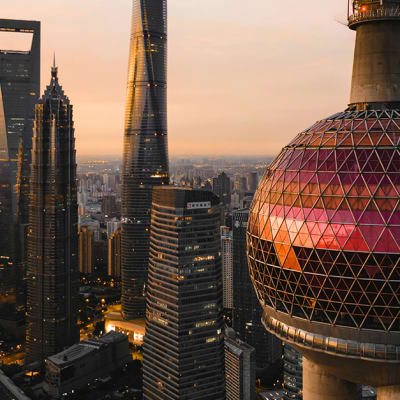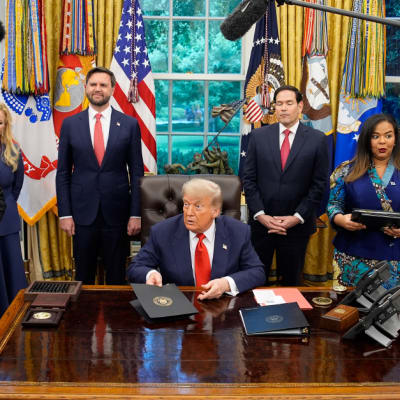The fund closed 1H 2025 at +4.58% (N Accumulating USD share class) vs the JACI index return of +4.02% for the same six-month period.
As we enter 2H25, we believe the market environment remains very conducive towards the Asia-EM USD higher yielding universe owing to (1) growing market expectations of a Fed rate cut during its upcoming Sep-Oct FOMC meetings, (2) lower domestic rates in various Asian countries, (3) weakening USD, (4) fund inflows into broader EM debt asset classes, (5) overall stable macroeconomic environment (i.e. growth-inflation mix) for Asia-EM, and (6) drop in front-end UST yields. The 2Y to 5Y UST yields are now all firmly below 4%, incentivising investors to reach out for higher all-in yields for short to mid duration assets. Against this backdrop, comparable US IG and HY spreads have narrowed dramatically since the April market volatility to 79 bps and 274 bps respectively, at the time of writing (8th July). We remain constructive on the Asia-EM macro backdrop and share our thesis as well as top picks in the attached 2H 2025 Asia Credit Outlook.
Over the past month, we took profit on various outperforming names and continued to optimise the portfolio for added diversity and new alpha sources.
Within IG financials, we added new positions within the Tier II capital space for new alpha generation going forward. We trimmed our long-held positions in Tier II ranked bonds in Bangkok Bank at ~180 bps, HSBC 10-year bullet bonds at 125-130 bps and Macquarie Bank Tier II bonds at 130-155 bps. Instead, we added to new Core holdings in Saudi National Bank 10NC5 Tier II at 6.0% or 200 bps and Qatar Insurance Corp at 230 bps (5-year callable instrument), which provide higher carry and greater potential for spread tightening. We also added tactically to the new Sumitomo Bank 20-year Tier II bonds at 102 bps, as we view fair value tighter on a spread perspective. We also tactically added to Resolution Life 2035 Tier II bonds at around 230 bps, as it is currently being wholly acquired by Japan’s Nippon Life (trades at 150-160 bps for high quality A- paper). Resolution Life is currently rated at Baa3/BB+ by Moody’s/Fitch and is on Positive Ratings Watch by both agencies. A successful regulatory approval, which we expect in 2H, will lead to rating upgrades and credit tightening towards Nippon Life levels.
Elsewhere in the insurance sector, we added to South Korea’s Tongyang Life and Taiwan’s Shin Kong Life as both firms, which are small insurers within their countries, are undergoing corporate transformations which are strengthening the quality of their respective parents. Tongyang Life is being acquired by Woori Bank (75% and possibly more), whilst the parent of Shin Kong Life in Taiwan is merging with Taishin Financial. This provides strong parent shareholding structure for future capital infusions when and if necessary, including potential growth purposes. All else being equal, we see these developments as positive to drive spreads tighter for these two small insurance firms.
Within IG corporates, we added to our holdings in South Korean battery giant LG Energy Solutions across its 2030 and 2035 bonds. LG Energy Solutions has guided for strong 2Q 2025 results, aided by US tax breaks and greater cost efficiency. We continue to believe the long-term secular battery demand for both EVs and energy storage solutions (to time-shift renewable energy generated) as well as its new product development. We have thus increased this as a Conviction position to ~1.5% in weight. We also continued to increase our holdings in Australia’s LNG giant Woodside 2054s.
Within HY, our key special situations holding West China Cement 2026 appreciated by 8-9 points since May, on the back of a sale of one of its non-core assets (cement plant) in China, as it continues to expand in Africa and other EM countries. This was in line with our thesis, and we have taken the opportunity to take profits and considerably reduce our position there from 1% to 0.3%.
In Hong Kong, New World Development (NWD) successfully completed its large bank loan refinancing exercise in June. It rolled over HKD 87bn of all bank debt that was coming due 2025, 2026 and 2027. It achieved low borrowing costs (in terms of bank loan spread) on this large and early refinancing exercise, as it provided investment properties as asset collateral to achieve this. NWD’s borrowing costs will be further aided by low HIBOR rates, as all its bank debt is floating in nature. HIBOR rates have collapsed lately, with 3-month rates now at a paltry 1.8%. This will further aid NWD and various other HK corporates’ aggregate borrowing cost going forward, whilst driving consumer and business demand for residential and other real estate. NWD has achieved strong contracted sales in 1H25 (HKD 26bn or USD 3.3bn), almost completing all its full year target based on strong pent-up demand as the property cycle stabilises and likely turns higher in HK.
With this successful loan refinancing exercise, NWD has achieved a clear repayment liquidity runway until 2027. It now has the added flexibility to conduct non-core asset sales, optimise its asset portfolio, and enhance rental streams from new assets coming online. This includes the K11 East Coast (Shenzhen) waterfront cultural and retail complex which has just open its doors to visitors. During early June, NWD deferred the coupons of its senior ranked perpetuals, which caused an equal drop in its senior bullet bonds. We used the volatility to switch our perpetual holdings to senior bullets, and we currently hold only senior bullet bonds with the largest holding being the 2028 bonds. We believe these bonds are very attractive given the high coupon generation and clear liquidity runway for the company for the next two years, and we remain overweight with ~2% portfolio weight in the issuer.
Elsewhere, we added to new Softbank Group 2031 (6.875% YTM) and 2035 (7.5% YTM) bonds back to the portfolio. Japan’s Softbank (rated BB+) is raising capital for its investment into OpenAI and US AI data centres, and hence is willing to pay up for the bond issuance given the sheer supply of new bonds coming to the market. Softbank raised over USD 4bn in this multi-tranche USD and EUR denominated bond issuance exercise. We expect them to return to the bond markets once more before year end for their growth needs. Despite the growth needs of Softbank, we believe the credit is very strong fundamentally based on its 87% ownership in ARM (USD 160bn market cap), majority stake in Japan leading telco Softbank Corp, and various other global assets. Softbank Group currently only has a portfolio LTV of up to 30% (on an adjusted basis).
We also added additional holdings to the fund to increase its diversity. This includes new Development Bank of Mongolia 2028 bonds at 9.25%, Saudi real estate development solutions provider Dar Al Alkan new 2030s at 7.375%, and Pakistan 2027 sovereign bonds at around ~10% yield. We also added to high quality and defensive HY holdings from India’s Greenko 7.25% 2028. To allow for this diversification, we took profits on partial holdings from front-end Nigeria and Egypt (2029-2030 paper), and utilised the proceeds from our sales in West China Cement 2026.
The fund currently stands at ~7.6% yield to worst, with a duration of 5.4 years and average rating of BBB-.
We appreciate your support, and please do not hesitate to reach us with your queries and feedback.
DHIRAJ BAJAJ
On behalf of LOIM Asia Fixed Income team







